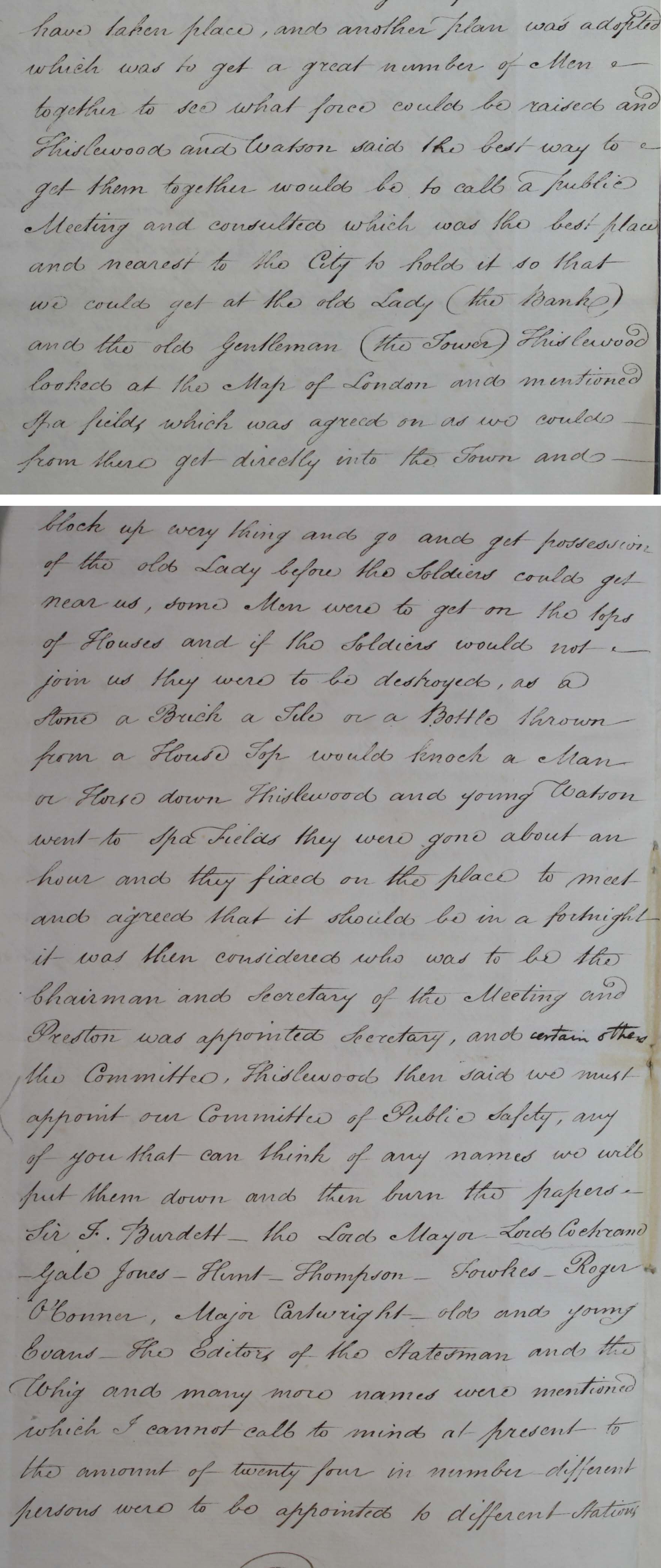
Extracts from ‘A statement of the Spa fields meeting and what the intention was meant for in calling that meeting’, dated February 1820. The statement held as a Home Office record was made by a Spencean Philanthropist acquainted with old and young Watson and part of the Thistlewood papers. (HO 44/4/f391-394)
Transcript
And another plan was adopted which was to get a great number of Men together to see what force could be raised and Thistlewood and Watson said the best way to get them together would be to call a public Meeting and consulted which was the best place and nearest the City to hold it so that we could get at the old Lady (the Bank) and the old Gentleman (the Tower) Thistlewood looked at the Map of London and mentioned Spa Fields which was agreed on as we could from there get directly into town and
(ii)
block up everything and go and get possession of the old Lady before the soldiers could get near us, some Men were to get on the tops of Houses and if the soldiers would not join us they were to be destroyed, as a stone, brick or tile or a bottle thrown from a house top would knock a man or horse down. Thistlewood and young Watson went to Spa Fields they were gone about an hour and they fixed on the place to meet and agreed that it should be in a fortnight it was then considered who was to be the Chairman and Secretary of the Meeting and Preston was appointed Secretary and certain others, the Committee, Thistlewood then said we must appoint our own Committee of Public Safety*, any of you that can think of any names we will put them down and then burn the papers. Sir F. Burdett, the Lord Mayor, Lord Cochrane, Gale Jones, Hunt, Thompson, Fowkes, Roger O’ Connor. Major Cartwright, old and young Evans, the Editor of The Statesman and the Whig and many more names were mentioned which I cannot call to mind at present to the amount of twenty-four in number were to be appointed…
*The Committee of Public Safety exercised executive power in France during the period known as the Reign of Terror at the time of the French Revolution.
